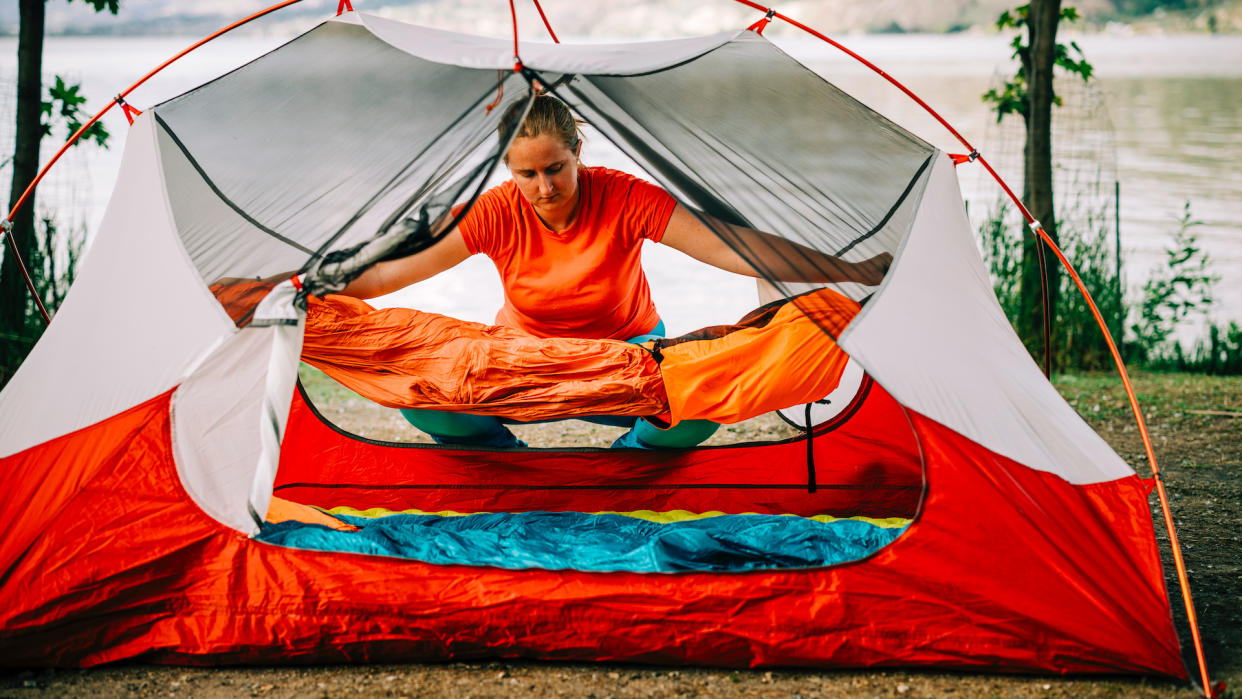How to use a sleeping bag liner

Sleeping bag liners are pretty versatile bits of kit. They can add some extra warmth when the temperatures plummet, they can help keep things clean and they can even be used as a standalone sleeping bag on super warm evenings. But how do you make the most out of them? Let’s take a deep dive into how to use a sleeping bag liner to make sure you’re properly equipped with all the know-how you need for your next adventure.
Different types of sleeping bag liners and their uses
If you’re looking for a sleeping bag liner, it’s first important to understand which is the best for you. With so many different styles and materials out there, let’s take a look at the benefits and drawbacks of the most popular kinds:

Cotton sleeping bag liners are the most basic (and cheapest) types of liners out there. They provide a protective layer between you and your sleeping bag to stop it from getting dirty – but they do little more than that. Reasonably heavy and bulky for what they are, they might not be your first choice for carrying on extended backpacking trips when weight is at a premium. And as they don’t do much to increase the warmth of your bag, they’re not as versatile as other options.
Silk sleeping bag liners are another popular style. Soft, cozy and ultra-breathable, they – like cotton liners – provide a protective layer between you and your sleeping bag, thereby preventing the bag from getting dirty so you rarely (if ever) have to wash it. Unlike cotton, however, silk is a much softer, lighter and tighter-woven material. This means that it’s substantially more comfortable to sleep in, packs down smaller and weighs much less. Decathlon’s Silk Sleeping Bag Cover, for example, is five times lighter and four times smaller than its cotton counterpart – although it does cost a little over three times the price.
Fleece or Thermolite sleeping bag liners are ideal if you’re looking for a warm sleeping bag liner that can extend the life of your three-season bag into winter. These provide the same protection as cotton and silk liners whilst being substantially warmer. Sea to Summit’s Reactor Liner adds up to 8°C to your sleeping bag, for example, which is more than enough to turn a two-season sleeping bag into a three-season setup or make a three-season sleeping bag usable year-round. Weighing in anywhere between 250g and 700g, however, these tend to be heavier and less packable than their cotton or silk counterparts.
Merino wool sleeping bag liners are perhaps the best choice for all-around performance. Merino wool liners protect your sleeping bag, provide a decent level of additional warmth, pack down reasonably small and don’t weigh much. They’re ideal for a variety of uses and, thanks to the antimicrobial properties of merino wool, they don’t absorb odors as quickly as many of the other materials, meaning you don’t have to wash them as often.

So, how do you use a sleeping bag liner?
Using a sleeping bag liner is astoundingly simple: in fact, if you’ve ever used a sleeping bag, you’ve kind of already mastered it. All you need to do is roll them out inside your sleeping bag, then climb inside as you would if you weren’t using one. Alternatively, if I’m using a thick winter bag, I prefer to open the sleeping bag up fully and sit inside it before pulling the liner up to my chest then zipping up the sleeping bag to lock everything in.
When you’ve got everything cinched tight, I find that sleeping bag liners do a great job of becoming an integral part of your sleep system. When you move, they move; and your sleeping bag follows suit too. In the summer months, however, when you use a sleeping bag liner in combination with a sleeping bag that isn’t zipped up tight, I find that you can often get tangled up inside the bag as the layers move in different directions through the night.
Packing up sleeping bag liners
Unlike sleeping bags, many sleeping bag liners cannot simply be stuffed back into their stuff sack. Instead, they need to be rolled back up and neatly put away, much like you would with an inflatable sleeping pad. If you try and stuff a cotton sleeping bag liner back into its tiny carry sack, for example, you will almost certainly struggle to get it all in there, and you may even tear the carry bag in the process.
